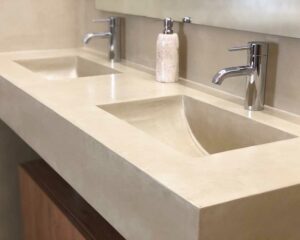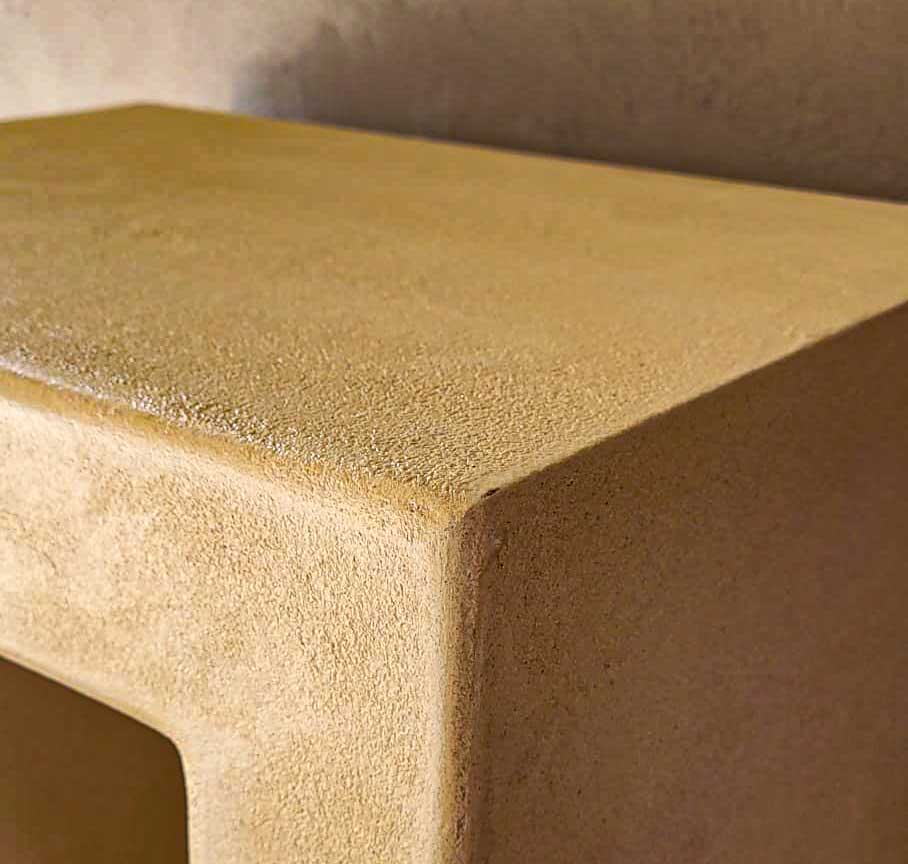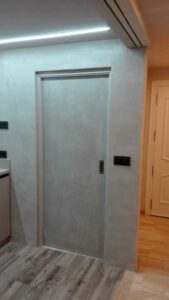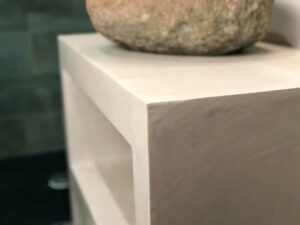
Washbasin Cabinet
Washbasin Cabinet Sinks of all kinds When it comes to reforming the bathroom, one of the elements that should be seen and decided is the
The relationship between architecture and microcement is becoming increasingly significant due to the aesthetic and performance benefits this material offers. Microcement has emerged as a popular alternative to traditional materials such as marble, stone, and granite.
One of the primary attractions of microcement is its ability to mimic the appearance of these natural materials while being more budget-friendly. Its versatility allows for customization in a wide range of colors, textures, and finishes, making it suitable for various architectural styles. This adaptability makes microcement an ideal choice for modern and minimalist design projects, where seamless and cohesive aesthetics are paramount.
Microcement not only enhances visual appeal but also contributes to practical benefits, such as durability and ease of maintenance. These qualities make it a preferred material among architects and designers looking to create sophisticated spaces without compromising functionality.

In addition to its aesthetic appeal, microcement is renowned for its strength and durability. This material is water-resistant and highly resistant to wear, making it an excellent choice for high-traffic areas and outdoor applications. Its easy-to-clean nature further enhances its suitability for kitchens and bathrooms, where cleanliness and hygiene are paramount.
When it comes to application, microcement can be applied in thin layers over the desired surface, making it an ideal solution for renovation and remodeling projects. This property allows homeowners and designers to refresh existing surfaces without the need for extensive demolition. Moreover, microcement offers the flexibility to create custom designs for floors, walls, and countertops, enabling unique and personalized aesthetics.
In the field of architecture, microcement has been successfully utilized in a wide range of projects, including homes, residential buildings, hotels, and restaurants. It is commonly employed for flooring, wall cladding, and countertops, as well as for creating both decorative and structural elements.
However, it is crucial to note that the application of microcement requires specialized preparation and expertise. For best results, it is highly advisable to hire a professional who is experienced in microcement installation. This ensures that the material is applied correctly, maximizing its durability and aesthetic appeal. Additionally, the cost of using microcement may be higher than that of other architectural materials, which should be taken into consideration when planning a project.
In conclusion, microcement has become an increasingly popular alternative to traditional materials due to its ability to mimic the look of natural materials at a more accessible price point. Its durability and resistance further enhance its appeal. Nonetheless, it’s important to keep in mind the necessity of professional application and the potential for higher costs compared to other options.
For more details and advice, visit our CimentStudio website to explore solutions tailored to your needs.

Washbasin Cabinet Sinks of all kinds When it comes to reforming the bathroom, one of the elements that should be seen and decided is the

Reform Doors with Microcement Restore doors with microcement When applying microcement on a door, the best option is undoubtedly a smooth sliding door. Although outside

Top Microcement Uses: Washbasins, Shower trays, Furniture, Countertops Washbasins in Microcement Nowadays and more and more, new materials are being sought for our home, and